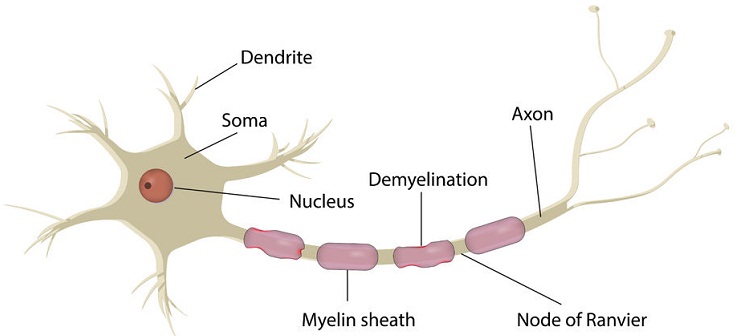

 Back to Suggested Publications
Back to Suggested Publications

The article we suggest this week, called "Guillain–Barré Syndrome Associated with Zika Virus Infection in Colombia", was published last week on NEJM and explores the correlation between Guillain–Barré syndrome and the current outbreak of ZIKV infection in Colombia.
SUMMARY
Zika virus (ZIKV), a mosquito-borne RNA flavivirus, has caused a major outbreak in the Americas that began in 2014. ZIKV infection manifests as a self-limited febrile syndrome associated with rash, conjunctivitis, and arthralgias. In 2013 and 2014, an increase in the number of cases of the Guillain–Barré syndrome was observed during an outbreak of ZIKV infection in French Polynesia. Recently, clusters of the Guillain–Barré syndrome have been related to the current outbreak of ZIKV infection in the Americas. By January 2016, the outbreak of ZIKV infection had spread to most regions of Colombia; concomitantly, an increase in the number of neuroinflammatory disorders was reported.
A total of 68 patients, who fulfilled the Brighton criteria for the Guillain–Barré syndrome and related variants, were included into the study. The median age was 47 years. A total of 66 patients (97%) had symptoms of ZIKV infection (fever, rash, headaches, myalgias, nonpurulent conjunctivitis and arthralgias) in the previous 4 week. The median time between the onset of the ZIKV infection symptoms and the onset of the Guillain–Barré syndrome was 7 days. The Guillain-Barrè syndrome symptoms at presentation included: limb weakness (97%), an ascending pattern of paralysis (82%), paresthesias (76%) and facial palsy (32%). A total of 40 patients (59%) were admitted to intensive care units, and 31% of all patients required mechanical ventilation. Treatment was administered to 46 patients (68%), and intravenous immune globulin (Ig) was the most commonly used. Three patients (4%) died after respiratory failure and sepsis.
Cerebrolspinal fluid (CSF) analysis was performed in 55 patients (81%): a total of 45 patients (82%) had albuminocytologic dissociation. Of the 68 patients, 42 (62%) underwent testing for ZIKV by reverse-transcriptase–polymerase-chain-reaction (RT-PCR) in at least one of three biologic samples: urine, serum, and CSF. A total of 17 patients (40%) tested positive for ZIKV by RT-PCR: most of the positive results were in urine samples.
A total of 32 of the 37 patients (86%) with the Guillain–Barré syndrome, who were tested, had the presence of cross-reactive IgM or IgG antiflavivirus antibodies.
The authors concluded that the identification of the ZIKV genome in biologic samples, together with the presence of immune responses to flaviviruses in the CSF in most of the patients tested, and the exclusion of a Dengue virus (DENV) infection, supported the involvement of ZIKV in these cases of the Guillain–Barré syndrome. Moreover, they assumed that the temporal profile of neurologic symptoms of their patients did not follow the classical postinfectious profile of the Guillain–Barré syndrome, but might follow the pattern of a parainfectious disorder. Finally, they highlighted a potential relationship between the Guillain–Barré syndrome in association with ZIKV infection and previous exposure to DENV infection.
AUTHORS
Beatriz Parra, Jairo Lizarazo, Jorge A. Jiménez-Arango, Andrés F. Zea-Vera, Guillermo González-Manrique, José Vargas, Jorge A. Angarita, Gonzalo Zuñiga, Reydmar Lopez-Gonzalez, Cindy L. Beltran, Karen H. Rizcala, Maria T. Morales, Oscar Pacheco, Martha L. Ospina, Anupama Kumar, David R. Cornblath, Laura S. Muñoz, Lyda Osorio, Paula Barreras, and Carlos A. Pardo
To read the full article, click here!